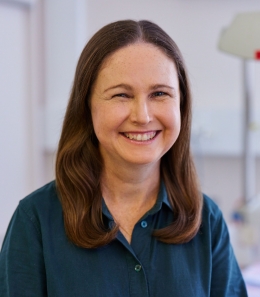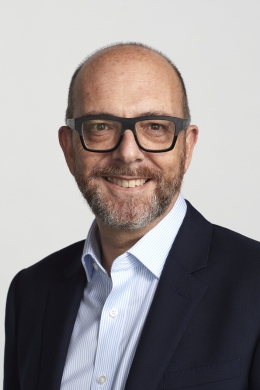Gene technologies are giving hope to patients with deadly rare diseases
Spinal muscular atrophy and cystic fibrosis are among the rare diseases being explored by UNSW Medicine & Health researchers.
Spinal muscular atrophy and cystic fibrosis are among the rare diseases being explored by UNSW Medicine & Health researchers.

Maddie Massy-Westropp
UNSW Medicine & Health
m.massywestropp@unsw.edu.au
In Australia, a disease is considered rare if it affects less than five in 10,000 people. Compared to common health issues, there has typically been limited funding and research to advance our understanding of the root causes and identify new treatments for rare diseases. For patients, this means the path to diagnosis can be long, and treatments can be difficult to access, prohibitively expensive or non-existent.
Now, researchers are leveraging advances in genetic technology to improve diagnosis and treatment for patients with rare diseases. UNSW Medicine & Health’s Associate Professor Michelle Farrar and Professor Adam Jaffé, who respectively work on spinal muscular atrophy (SMA) and cystic fibrosis (CF), have seen patient outcomes transform over the past decades.
Fifteen years ago, SMA was the leading genetic cause of infant death, affecting around one in 10,000 newborns in Australia. Due to a missing or faulty SMN1 gene, motor neurons in the spine can’t survive, leading to muscles shrinking and becoming weaker. Most infants born with type 1 SMA – the most common form of the disease – didn’t live beyond two years.

Associate Professor Michelle Farrar is researching spinal muscular atrophy (SMA). Photo: Supplied.
“As a clinician, it was a heart-sinking moment when you diagnosed an infant and you just knew it was really bad news. I wanted to bring research into the clinic and drive change,” said A/Prof. Farrar, who is a clinical academic at UNSW Medicine & Health and child neurologist at Sydney Children’s Hospital (SCH).
Read more: Funding supports Australians living with a rare disease
Treatment for SMA has transformed, with three new genetic therapies now treating the cause rather than just managing symptoms and improving health outcomes. Infants with SMA have been able to access these emerging therapies via clinical trials at SCH with support from UNSW and, following positive results, these treatments have been listed on the Pharmaceutical Benefits Scheme (PBS).
One of the challenges facing babies with SMA was that they were only diagnosed and then treated after symptoms started appearing, when there would already be significant, irreversible neurological damage. A/Prof. Farrar and her colleagues have worked to include a test for SMA as part of standard newborn screening. After a successful pilot study in NSW and the ACT, the SMA test is now a part of routine newborn screening, with a national adoption underway.
“This is a powerful example of how new genetic technologies can work,” A/Prof. Farrar said. “We’re now at an inflection point and looking at how this can be applied for other rare diseases.”
Fifty years ago, the average life expectancy of a person with CF was five years. Today, that sits somewhere in the thirties. Professor Adam Jaffé, who is Head of Paediatrics at UNSW Medicine & Health and paediatric respiratory specialist at SCH, would like to see people with CF reaching old age.
Four in every 10,000 babies in Australia are born with CF. The condition is caused by genetic defects that limit the flow of chloride and water through cell membranes, resulting in a thick, sticky build-up of mucus in the lungs and other organs. Patients can struggle to breathe and are susceptible to lung infections.

Professor Adam Jaffe is researching cystic fibrosis (CF). Photo: UNSW.
During the last decade, treatment for CF has transformed from reducing symptoms to addressing the root cause of the disease. New drugs address the function of the faulty gene and improve the flow of chloride and water, with dramatic results for patients.
“I saw a child who was very unwell and we had the palliative care team involved in her management. I got compassionate access to these drugs and her lung function went from 25 per cent to 50 per cent in four days,” Professor Jaffé said.
“Now she’s 15 and her lung function is 58 per cent. It’s unbelievable. Her parents say she doesn’t cough all through the night now, she has gained weight and is living her life to the full.”
However, a CF patient may respond well to one drug and not another. The costs of getting this wrong are high, with these drugs priced at up to $250,000 per patient per year to list on the PBS.
At the Molecular and Integrative Cystic Fibrosis Research Centre, Professor Jaffé works with CF ‘avatars’ – samples of gut and lung tissue from children with CF which can be grown in petri dishes. Each avatar is tested to see how it responds to various treatments, enabling a child to be matched with the right drug.
“The big challenge is that we have the ability to make sure the right patient gets the right drug at the right time, [but] not to forget about the 10 per cent who don’t yet have access to any drug options,” Professor Jaffé said.
Register for UNSW Medicine & Health’s MedConnect event on 16 November: Rare disease: uniting genetics and breakthrough medicine.